|
|
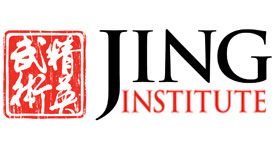 |
Locations and Directions
Links Like Us Read our Thoughts Watch Us |
|
|
 |
Locations and Directions
Links Like Us Read our Thoughts Watch Us |
Below, I have listed the Chinese names of most of the basic wushu/Kung Fu moves, as well as other useful terms. Tonality is denoted with numbers, ie 1=first tone, 2=second tone, etc., and their pronunciation is given in Pin Yin (the official romanization of Mainland China). Please read the Basics if you are new to the Chinese Language!
Basics of the Mandarin Dialect of the Chinese Language
Chinese Taiji Articles by famous masters
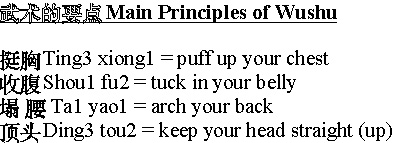


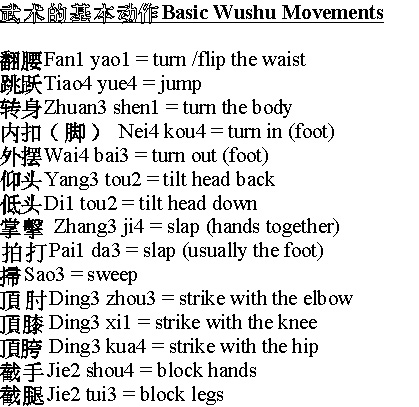
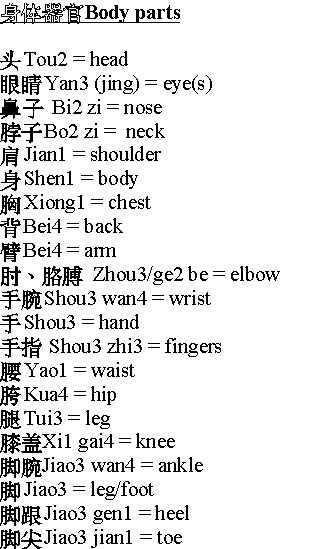
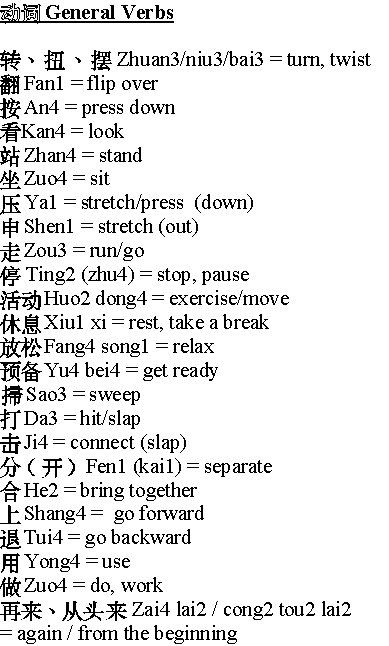
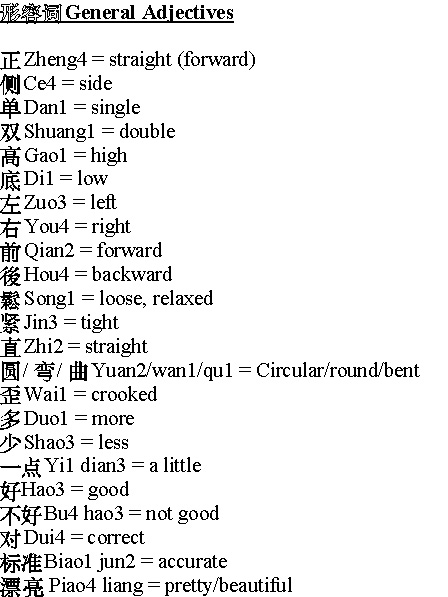
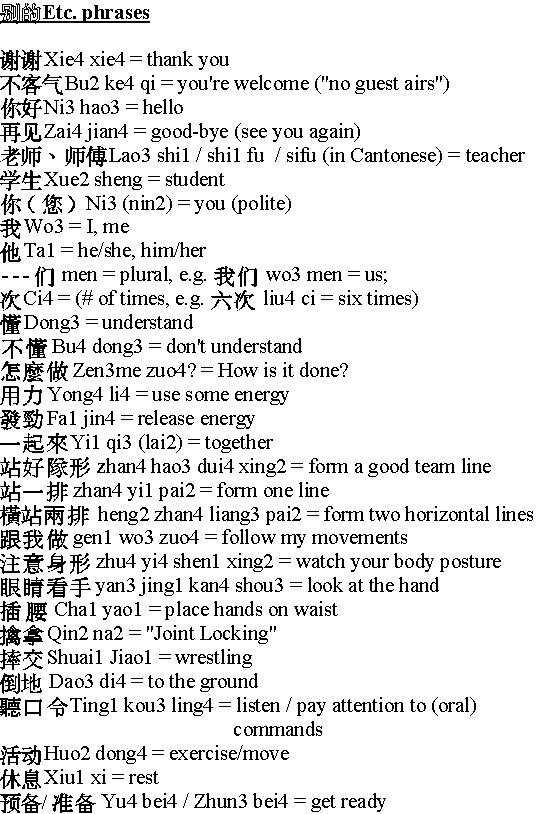
Tones
1 = high and flat, could go on forever
2 = rising
3 = dipping/falling
4 = high and sharp, then dying out
Tricky Consonants
G = hard g
Zh- like a heavy J, as in Jukebox
Ch- heavy ch, as in Chores
Sh- heavy sh, as in Shores
Z buzzing like a bee. Zzzzzzzzz
C buzzing with initial breath expulsion
S soft and silky, like a snake slithering
J very clean, clear ts sound
Q ts sound with breath expulsion
X similar to the S in Sea.
Vowels
a as in father
o as in horse
e as in
i as in eeeeee
u as in John Woo
ü (u with an umlaut) as in yew, before the w.
-i*
ai as in daily
ei as in eight
ao as in the vowel sound in "pout"
ou as in the vowel sound in "go"
ia
ie
iao
iu
ua
uo
uai
ui
*-i goes in (zhi chi shi ri zi ci si ji qi xi) to indicate the consonant's original sound ("jur" "chur" "shur" "rur" "zz" "czcz" "sss" "tsjee" "tsee" "seeee").
** J, Q, X are only ever followed by i and ü.
Grammar
There is very little obvious grammar in Chinese.
There are no plural forms, no masculine/feminine, and no past/present/future tenses. (Ain't it Great!)
There are, however, Classifiers and Helpers.
Classifiers are the "the" words of Chinese - one for long stringy things, one for thin flat things, one for animals, one for tables, etc. Beginners can get away with the universal classifier "ge4" most of the time.
Helpers denote things like Tense, Question, and Command. They go after the verb, usually at the end of a sentence.
Le - past tense.
Ma - question.
Ba - statement.

9865 Businesspark Ave, Ste D, San Diego, CA 92131
Phone (858) 578-8267